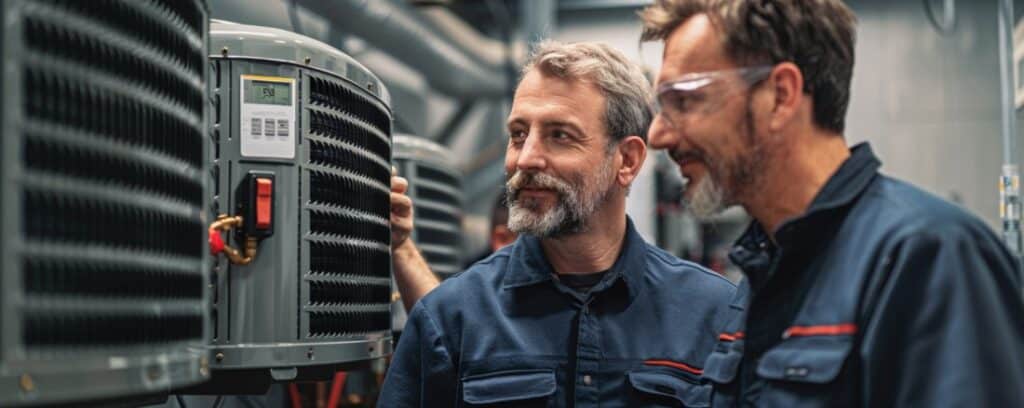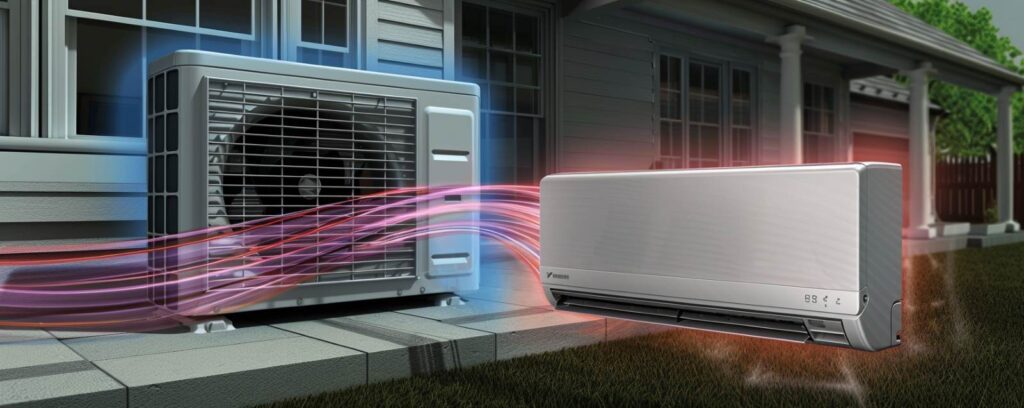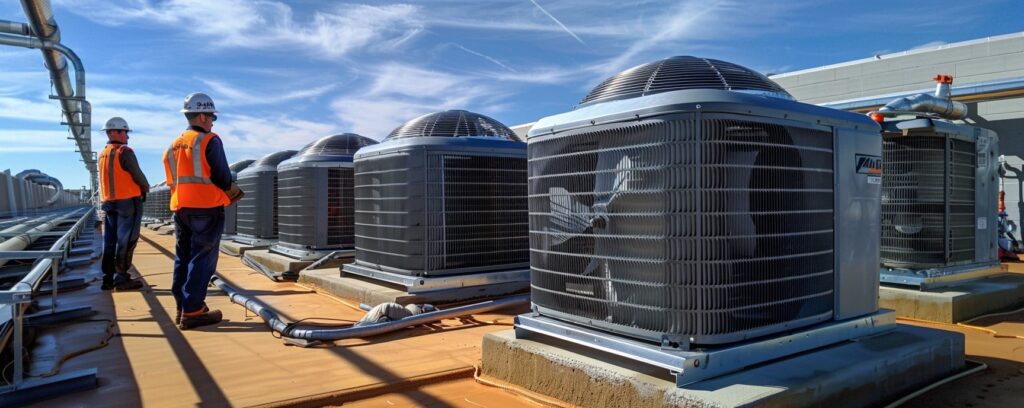- Understanding ENERGY STAR and Energy Efficiency Tier Ratings
- Exploring the CEE Energy Efficiency Tier Rating System
- Empowering Your Energy Efficiency Journey
- Additional Resources
- Frequently Asked Questions
- 1. What is ENERGY STAR?
- 2. What is the CEE Energy Efficiency Tier Rating System?
- 3. Are ENERGY STAR and CEE Related?
- 4. How Do Products Earn the ENERGY STAR Label?
- 5. Why Should I Choose ENERGY STAR Rated Products?
- 6. Can the CEE Tier Rating System Help Me Choose an HVAC System?
- 7. Are ENERGY STAR Products Required in Any Cities or States?
- 8. How Can I Find ENERGY STAR or CEE Tier Rated Products?
- 9. What Impact Do ENERGY STAR and CEE Tier Rated Products Have on the Environment?
- 10. How Can Builders and HVAC Professionals Benefit from ENERGY STAR and CEE Ratings?
The quest for more sustainable living and energy-efficient homes has never been more critical. As homeowners, builders, and HVAC professionals seek ways to minimize environmental impact while maximizing efficiency, understanding the energy efficiency tier rating system becomes pivotal.
This guide demystifies the ENERGY STAR program and the Consortium for Energy Efficiency (CEE) Energy Efficiency Tier Rating System, offering an invaluable resource for making informed decisions on energy use and appliance selection.
Understanding ENERGY STAR and Energy Efficiency Tier Ratings
In an era where climate change and energy conservation are at the forefront of global discussions, the adoption of energy-efficient technologies and practices is a primary goal for many.
The energy efficiency tier rating system, including the widely recognized ENERGY STAR certification and the CEE’s detailed tiered structure, serves as a compass for navigating the vast market of appliances and systems.
These ratings not only provide benchmarks for energy consumption but also guide consumers and professionals towards products that promise lower utility bills, reduced environmental impact, and adherence to high-performance standards.
Through this guide, we aim to shed light on the essence of the ENERGY STAR program and the CEE Energy Efficiency Tier Rating System.
We’ll explore their histories, missions, how products qualify for these distinctions, and the tangible benefits they offer.
Whether you’re a homeowner looking to upgrade your appliances, a builder integrating the latest technologies into new homes, or an HVAC professional recommending the best systems to your clients, understanding these ratings will empower you to make choices that align with today’s energy efficiency goals.
What Is ENERGY STAR?
ENERGY STAR is a program run by the U.S. Environmental Protection Agency (EPA) and the U.S. Department of Energy (DOE) designed to help businesses and individuals save money and protect our climate through superior energy efficiency.
Established in 1992, the program has become an international standard for energy-efficient consumer products. Products that earn the ENERGY STAR label meet strict energy-efficiency specifications set by the EPA, ensuring consumers and businesses that these products offer savings on energy bills without sacrificing performance or features.
Benefits of ENERGY STAR Rated Products
➤Energy Savings and Environmental Benefits
Products awarded the ENERGY STAR label significantly reduce energy consumption and greenhouse gas emissions, compared to standard products.
By opting for ENERGY STAR rated appliances and equipment, homeowners and businesses can contribute to a more sustainable future, cutting energy costs and reducing the overall environmental impact.
➤Cost Savings Over the Product’s Lifespan
While ENERGY STAR rated products might come with a higher initial cost compared to non-rated alternatives, the energy savings they provide over their lifespan typically offset the initial investment.
For HVAC systems, in particular, choosing ENERGY STAR rated options can lead to substantial savings on utility bills and maintenance costs.
Spotlight on HVAC: Focus on ENERGY STAR-rated HVAC Systems
HVAC systems are among the largest energy consumers in U.S. homes. ENERGY STAR-rated HVAC units are designed to be more efficient than conventional models, which can translate into significant energy and cost savings for homeowners.
Additionally, for HVAC professionals, recommending and installing ENERGY STAR rated systems not only helps meet consumer demand for energy efficiency but also supports environmental sustainability.
Exploring the CEE Energy Efficiency Tier Rating System
The Consortium for Energy Efficiency (CEE) is a North American consortium that promotes the manufacture and purchase of energy-efficient products and services. The CEE works closely with ENERGY STAR, utility companies, and manufacturers to define higher standards of energy efficiency for appliances, including HVAC systems.
By setting these rigorous standards, the CEE aims to reduce energy consumption, lower utility costs for consumers, and contribute to environmental conservation.
Understanding the CEE Tier Rating System
The CEE Energy Efficiency Tier Rating System categorizes appliances and equipment based on their energy efficiency, with multiple tiers representing varying levels of energy performance.
The system is designed to provide a more detailed analysis of energy efficiency than the binary qualified/not qualified ratings of ENERGY STAR.
Products that achieve higher tiers in the CEE rating system are those that exceed minimum federal energy efficiency standards by a significant margin, offering superior energy savings and performance.
Comparison with ENERGY STAR: How CEE Tiers Offer a More Granular Look at Efficiency
While ENERGY STAR provides a valuable benchmark for energy efficiency, the CEE tier rating system takes it a step further by offering more nuanced distinctions between levels of efficiency.
This granularity allows consumers, builders, and HVAC professionals to make even more informed decisions when selecting products, especially when looking for the highest efficiency options available on the market.
| Feature | ENERGY STAR | CEE Tier Rating System |
| Objective | Identify products that are energy-efficient across various categories. | Provide a more detailed classification of energy efficiency, going beyond ENERGY STAR standards. |
| Criteria | Products must meet strict energy efficiency guidelines set by the EPA. | Products are categorized into tiers based on their efficiency, with higher tiers representing greater efficiency. |
| Product Categories Covered | Appliances, building products, electronics, heating/cooling, etc. | Similar to ENERGY STAR, but with a focus on providing a gradation of efficiency within categories. |
| Benefits for Consumers | Reduced energy bills, environmental protection, and potential rebates. | Allows for more nuanced choices within energy-efficient products, potentially leading to higher energy savings. |
| Impact on Environment | Reduces greenhouse gas emissions and other pollutants. | Encourages the development and adoption of top-tier efficient products, further reducing environmental impact. |
| Notable Differences | Broadly recognized symbol for energy efficiency; simpler, binary qualification. | Offers gradation within energy-efficient products; more detailed for comparative purposes. |
Impact on HVAC Selection and Installation
For HVAC systems, the CEE tier rating can be particularly useful. It helps professionals identify which systems offer the best energy efficiency for their clients’ specific needs, enabling the selection of products that not only meet but exceed ENERGY STAR standards.
This detailed tier system encourages the adoption of the most efficient HVAC technologies, leading to greater energy savings, reduced environmental impact, and improved indoor comfort.
Choosing the Right Products: Navigating ENERGY STAR and CEE Ratings
For homeowners, builders, and HVAC professionals, understanding and utilizing the ENERGY STAR label and CEE energy efficiency tier ratings can significantly influence the selection of HVAC systems and other appliances. Here are some tips for navigating these ratings effectively:
- Prioritize ENERGY STAR: Start by looking for the ENERGY STAR label as a minimum standard for energy efficiency. This ensures the product meets or exceeds federal guidelines.
- Consult CEE Tiers for Further Differentiation: Once you’ve identified ENERGY STAR qualified products, use the CEE tier rating to differentiate further between energy efficiency levels. Opt for higher-tier products for maximum energy savings.
- Consider Total Cost of Ownership: Factor in the initial cost against projected energy savings and potential rebates for ENERGY STAR or high-tier CEE rated products. Often, these products offer greater savings over time.
Future Trends in Energy Efficiency
The landscape of energy efficiency is continually evolving, with advancements in technology and changes in standards. Discuss potential future trends, such as:
- Innovations in HVAC Technology: Emerging technologies that could set new benchmarks for energy efficiency.
- Evolving ENERGY STAR and CEE Standards: How upcoming changes to ENERGY STAR criteria and CEE tiers could raise the bar for energy-efficient products.
- Increased Focus on Sustainable Building Practices: The growing importance of energy efficiency in building codes and standards, and how this might affect the selection of HVAC systems and other appliances.
Empowering Your Energy Efficiency Journey
Armed with the knowledge of ENERGY STAR and the CEE Energy Efficiency Tier Rating System, homeowners, builders, and HVAC professionals are now better equipped to make informed choices that not only benefit the environment but also lead to significant cost savings over time.
The emphasis on selecting high-efficiency products is more than just a financial consideration—it’s a commitment to reducing our environmental footprint and fostering a sustainable future.
The Role of Everyone in Promoting Energy Efficiency
The journey toward more sustainable energy usage is a collective effort. Homeowners can adopt more energy-efficient appliances, builders can prioritize high-efficiency systems in their projects, and HVAC professionals can recommend and install the top-tier energy-efficient products.
Together, these actions contribute to a larger impact on energy conservation and environmental protection.
Looking Ahead
As we look to the future, the importance of energy efficiency will only grow. Technological advancements, evolving standards, and increasing awareness about environmental issues will continue to push the boundaries of what’s possible in energy conservation.
Staying informed about ENERGY STAR and CEE tier ratings, and adapting to new innovations and standards, will remain crucial for all stakeholders in the energy efficiency ecosystem.
Final Thoughts
Choosing energy-efficient HVAC systems and appliances isn’t just a smart decision for today—it’s an investment in a more sustainable and cost-effective future. By prioritizing products that meet the stringent criteria of ENERGY STAR and the detailed classifications of the CEE Energy Efficiency Tier Rating System, we can all play a part in this important movement towards greater energy efficiency.
Let this guide be your roadmap as you navigate the path to a more energy-efficient home or project. Remember, every choice counts in our collective quest for a sustainable future.
Additional Resources
To deepen your understanding of ENERGY STAR and the CEE Energy Efficiency Tier Rating System, and to stay updated on the latest in energy efficiency, the following resources are invaluable:
- ENERGY STAR : Explore a wide range of energy-efficient products, get tips on saving energy, and learn more about the ENERGY STAR program.
- Consortium for Energy Efficiency (CEE) : Get detailed information on the CEE Energy Efficiency Tier Rating System and resources for both consumers and professionals.
- U.S. Department of Energy (DOE) : Find resources on energy efficiency and renewable energy technologies from the DOE.
- U.S. Environmental Protection Agency (EPA) : Learn about the EPA’s initiatives to protect the environment through energy efficiency.
These resources offer comprehensive information and tools to assist in making well-informed decisions regarding energy-efficient products and practices.
Frequently Asked Questions
1. What is ENERGY STAR?
ENERGY STAR is a program established by the U.S. Environmental Protection Agency (EPA) aimed at helping businesses and individuals save money and protect the climate through superior energy efficiency. Products that earn the ENERGY STAR label meet strict energy-efficiency specifications set by the EPA.
2. What is the CEE Energy Efficiency Tier Rating System?
The CEE Energy Efficiency Tier Rating System is developed by the Consortium for Energy Efficiency (CEE) and categorizes appliances and equipment based on their energy efficiency. It offers a more granular look at efficiency beyond the basic ENERGY STAR certification, with higher tiers indicating superior energy performance.
3. Are ENERGY STAR and CEE Related?
Yes, ENERGY STAR and the CEE are related in their goals but operate independently. ENERGY STAR provides a baseline for energy efficiency, while the CEE’s tier rating system builds on this foundation to identify products that exceed these baseline standards, offering consumers and professionals a more detailed guide to energy efficiency.
4. How Do Products Earn the ENERGY STAR Label?
Products earn the ENERGY STAR label by meeting the energy efficiency requirements set forth in ENERGY STAR product specifications. These specifications are based on key guiding principles, including the product’s ability to deliver significant energy savings nationwide and its features and performance must be equivalent to or better than non-energy efficient counterparts.
5. Why Should I Choose ENERGY STAR Rated Products?
Choosing ENERGY STAR rated products can lead to significant energy and cost savings over the product’s lifespan. Additionally, these products reduce greenhouse gas emissions, contributing to environmental conservation.
6. Can the CEE Tier Rating System Help Me Choose an HVAC System?
Yes, the CEE Tier Rating System is particularly useful for choosing HVAC systems. It allows HVAC professionals and consumers to identify which systems offer the best energy efficiency for their specific needs, promoting the selection of products that exceed ENERGY STAR standards.
7. Are ENERGY STAR Products Required in Any Cities or States?
Some cities or states may have building codes or incentives that encourage or require the use of ENERGY STAR products to promote energy efficiency in new construction and renovations. However, these regulations can vary widely, so it’s essential to check local requirements.
8. How Can I Find ENERGY STAR or CEE Tier Rated Products?
You can find ENERGY STAR rated products by visiting the ENERGY STAR website at www.energystar.gov . For products with CEE tier ratings, check the CEE’s official website at www.cee1.org , where you can find detailed lists and comparison tools.
9. What Impact Do ENERGY STAR and CEE Tier Rated Products Have on the Environment?
ENERGY STAR and higher CEE tier rated products significantly reduce energy consumption, which in turn lowers greenhouse gas emissions and other pollutants associated with energy production. This contributes to a healthier environment and combats climate change.
10. How Can Builders and HVAC Professionals Benefit from ENERGY STAR and CEE Ratings?
Builders and HVAC professionals can leverage these ratings to guide their clients toward more energy-efficient choices, resulting in lower utility bills, enhanced comfort, and reduced environmental impact. This can also improve client satisfaction and support sustainability goals.




